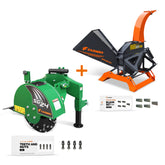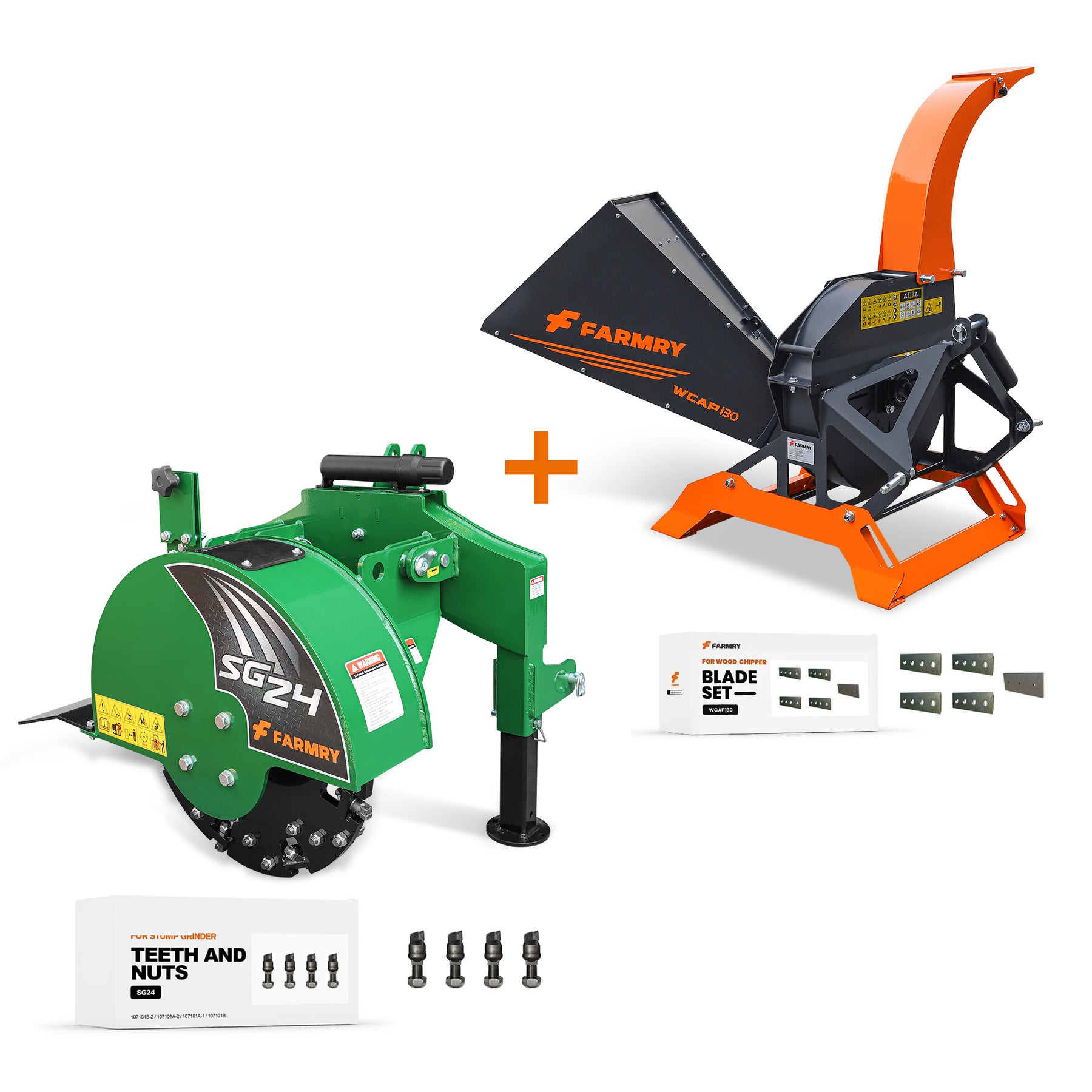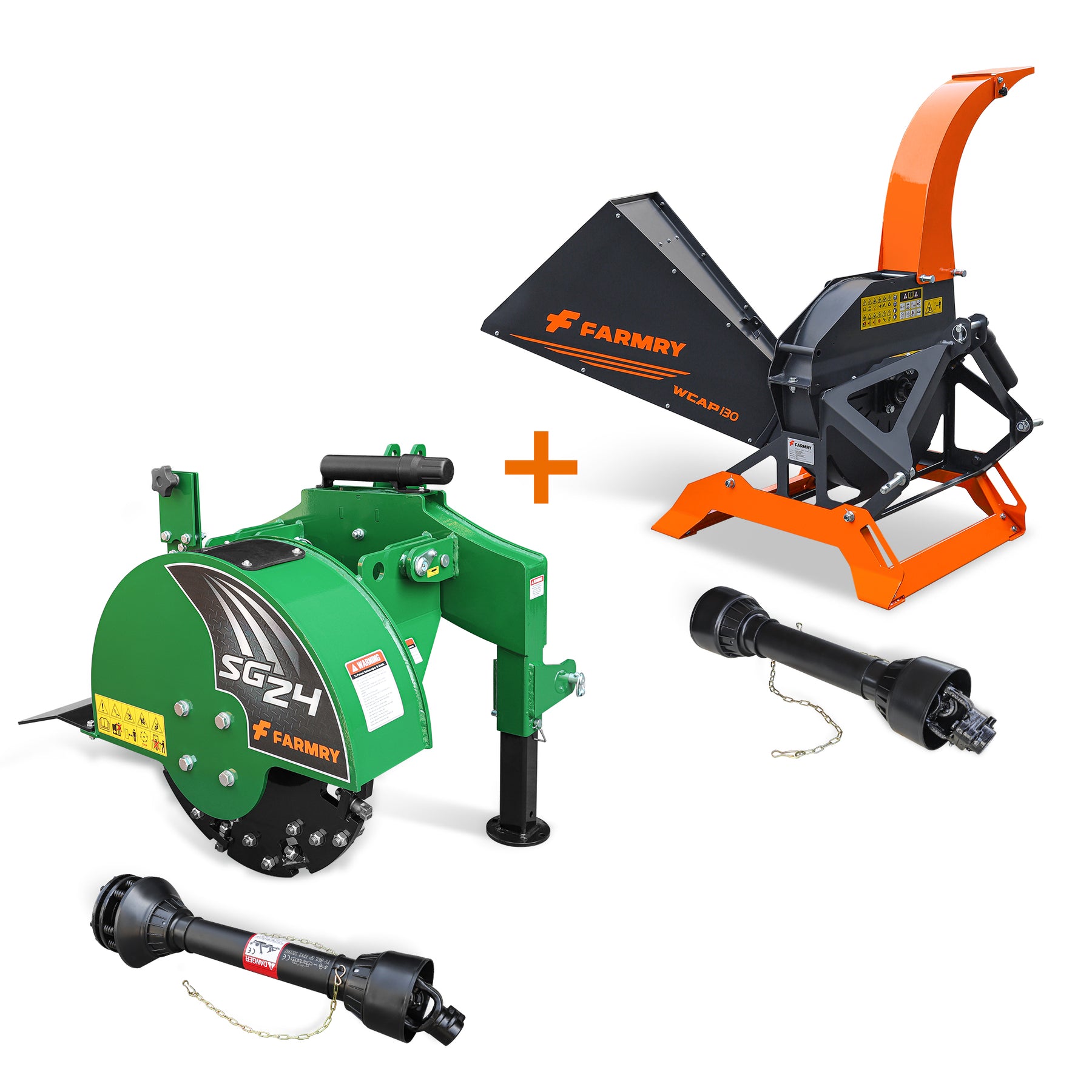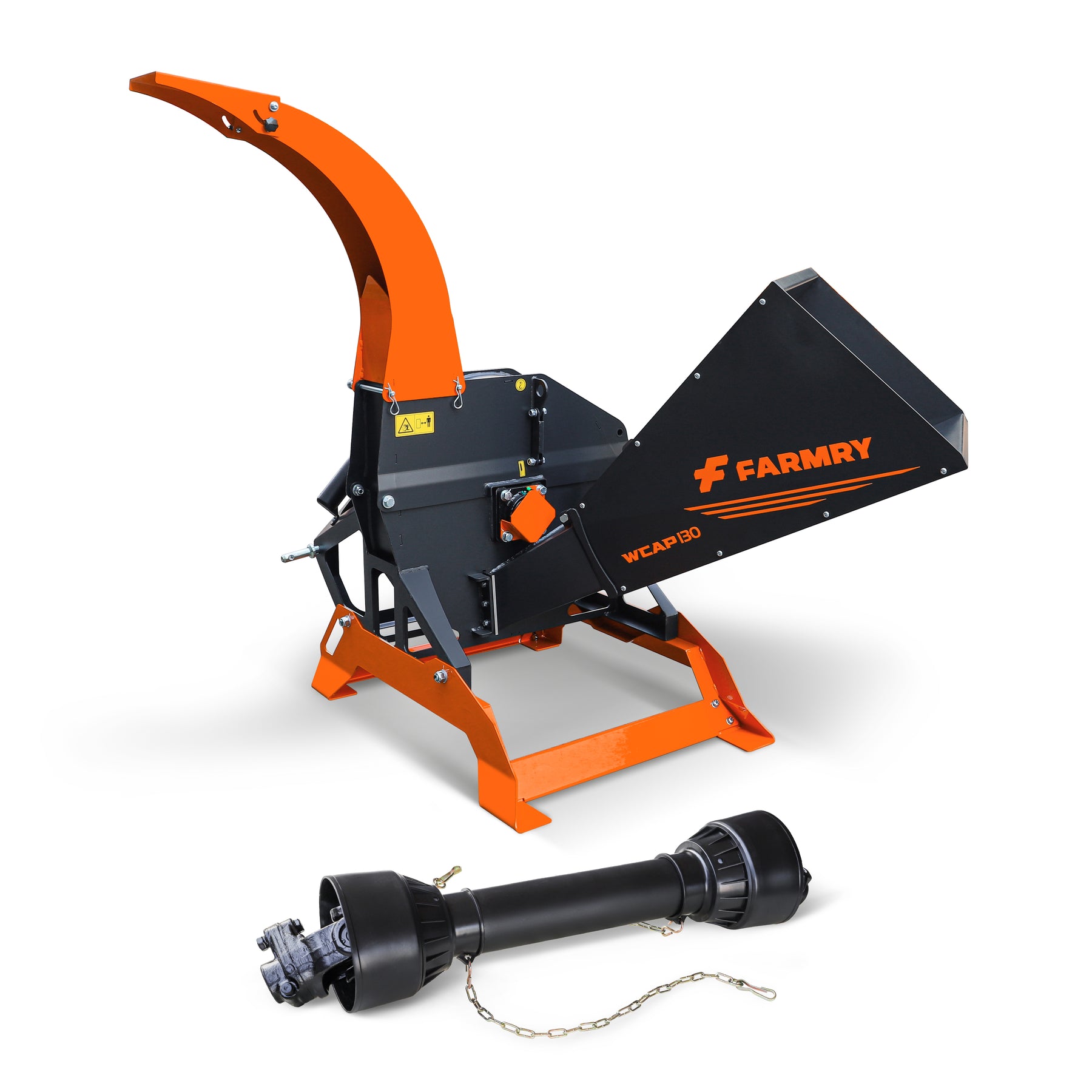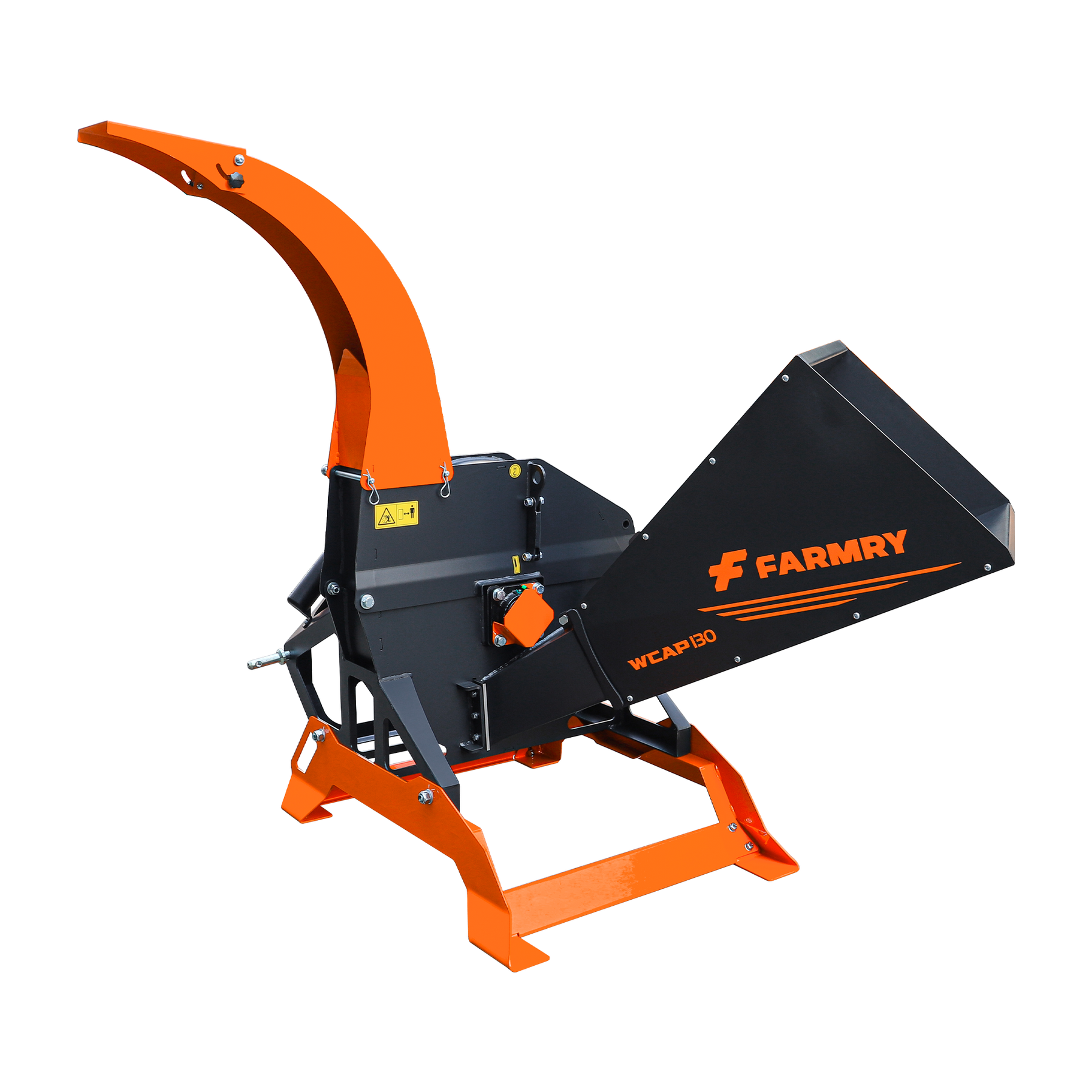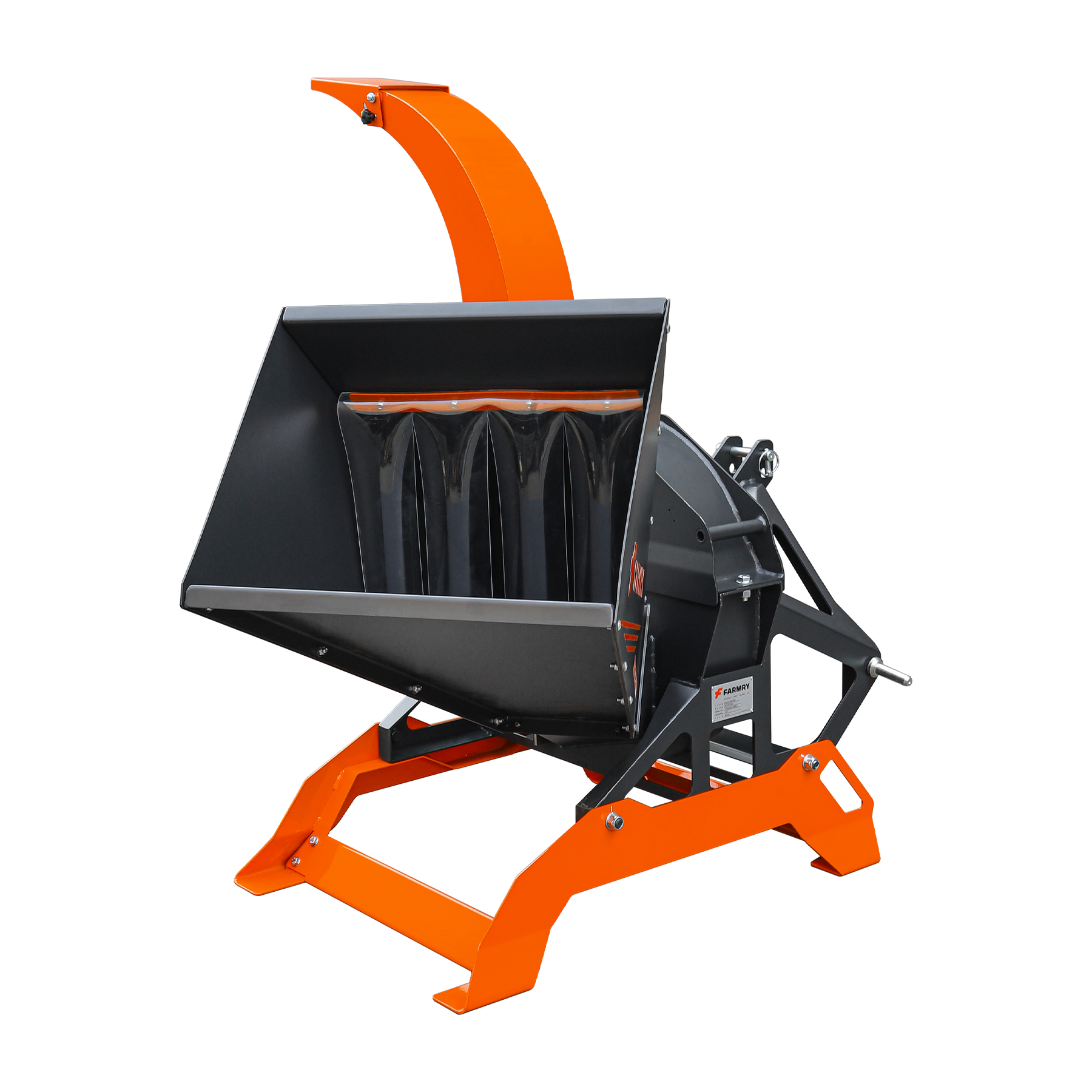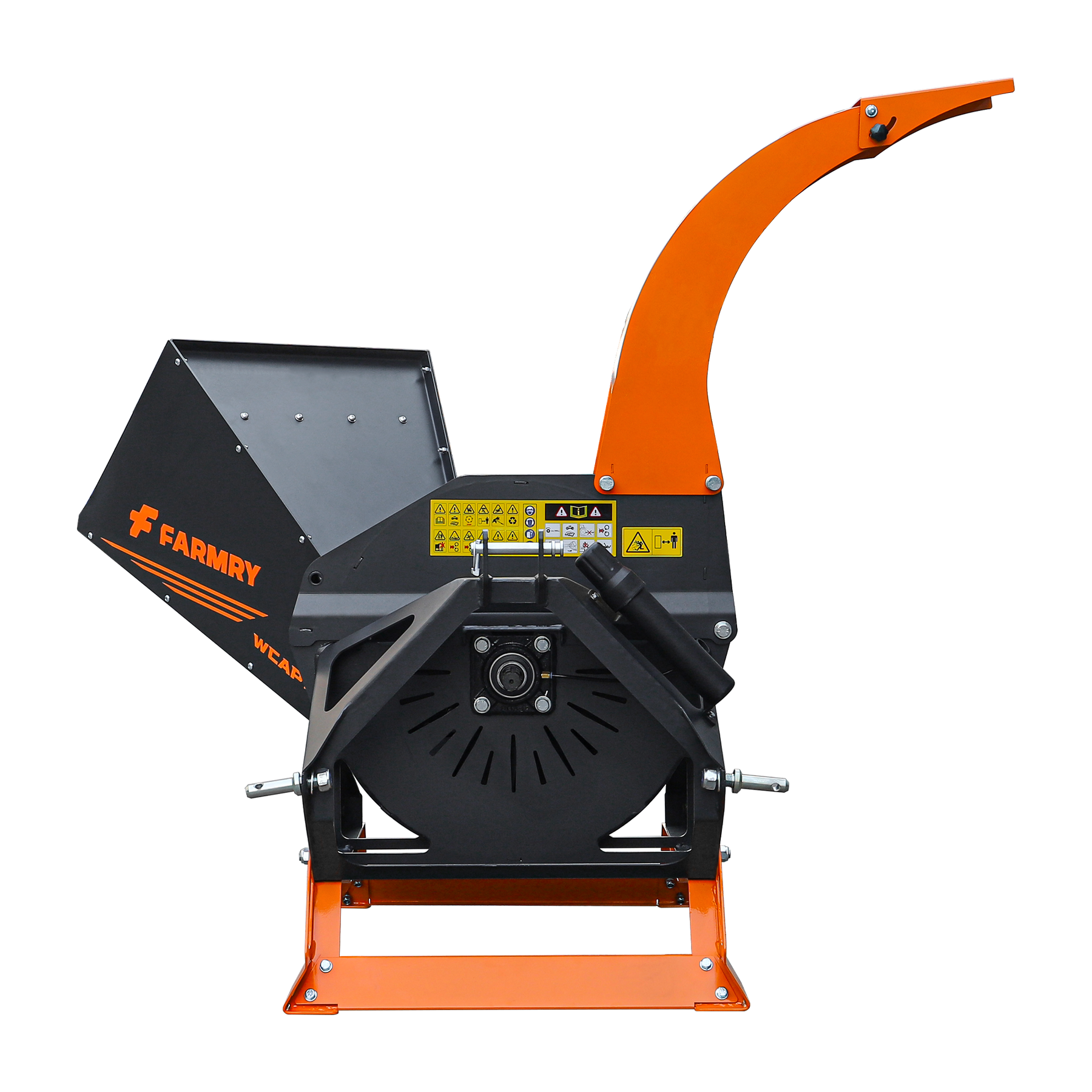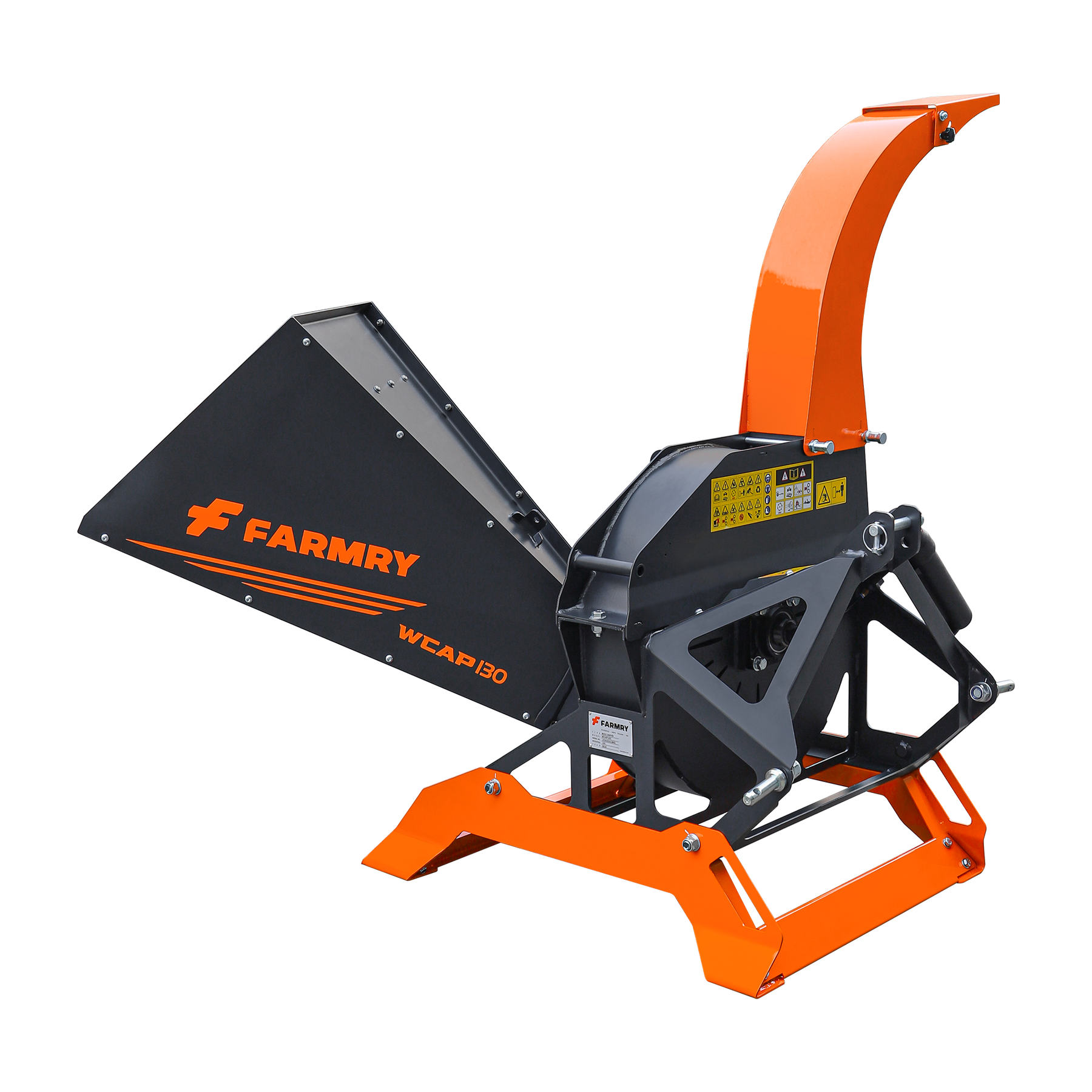FAQs
What is a PTO-driven wood chipper?
A PTO-driven wood chipper is a powerful machine that connects directly to your tractor PTO shaft through a 3-point hitch system. Instead of relying on a separate gas engine, the drive system uses the tractor’s power take-off (PTO hp) and hydraulic system to spin the flywheel housing and feed branches into the infeed chute. With features like reversible blades, a wide chute opening, and durable powder coat finish, these chippers deliver impressive chipping capacity and longer life. Farmers, landscapers, and property owners often choose this type of wood chipper equipment because it integrates seamlessly with existing tractors, reduces extra maintenance, and offers reliable performance on brush, piles of limbs, and heavy branches.
Are PTO chippers better than gas chippers?
For many customers, PTO chippers outperform gas chippers. Because they draw power from the tractor, PTO models usually have a larger flywheel diameter, greater rotor size, and stronger hydraulic infeed systems. That translates to higher chipping capacity, faster processing, and smoother handling of bigger wood diameters. Gas chippers can be more mobile as self-contained machines, but they often lack the brute power and efficiency of a tractor PTO-driven chipper. When you need to handle bulk brush or thicker branches, a PTO chipper is often the “beast” that gets the job done with less downtime.
Can you put wet leaves in a wood chipper?
Yes, you can feed wet leaves into a wood chipper, but most machines—including PTO wood chippers—perform best on branches, limbs, and brush. Leaves and damp organic material can clog the infeed system or stick to the discharge chute, especially if the flywheel speed isn’t high enough. To avoid jams, it’s recommended to mix leaves with small branches or allow them to dry before chipping. Always check your instructions, follow the manufacturer’s specs, and watch videos for tips on safe handling.
What not to put in a wood chipper?
Avoid inserting nuts, rocks, metal, or processed lumber into any chipper. These objects can damage the rotor, dull the blades, shear the pins, and even break the flywheel housing. A PTO-driven wood chipper is engineered for wood, brush, and natural yard debris. Feeding in the wrong materials risks voiding the warranty, increasing cost of replacement parts, and reducing compatibility with your tractor PTO drive system. Stick to natural branches and brush piles to protect both the equipment and operator.
Are PTO-driven wood chippers worth it?
Yes, PTO chippers are often worth the investment, especially for farms, orchards, and large property maintenance. With shipping weight designed to balance on your tractor’s rear lift capacity, and PTO shaft included for quick hook-up, they provide serious chipping diameter and consistent performance. Because they rely on your tractor’s hydraulic pump, variable speed infeed system, and raw PTO power, you avoid the extra tank, engine, or self-contained drive system found in gas models. Long-lasting powder coat finishes, heavy-duty flywheels, and reversible blades make them durable, and most come with a warranty plus easy access to replacement parts. For customers handling piles of brush or looking for complete, farm-ready equipment, a PTO wood chipper is a smart, cost-effective choice.
